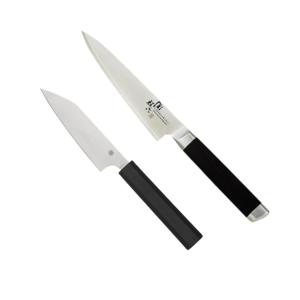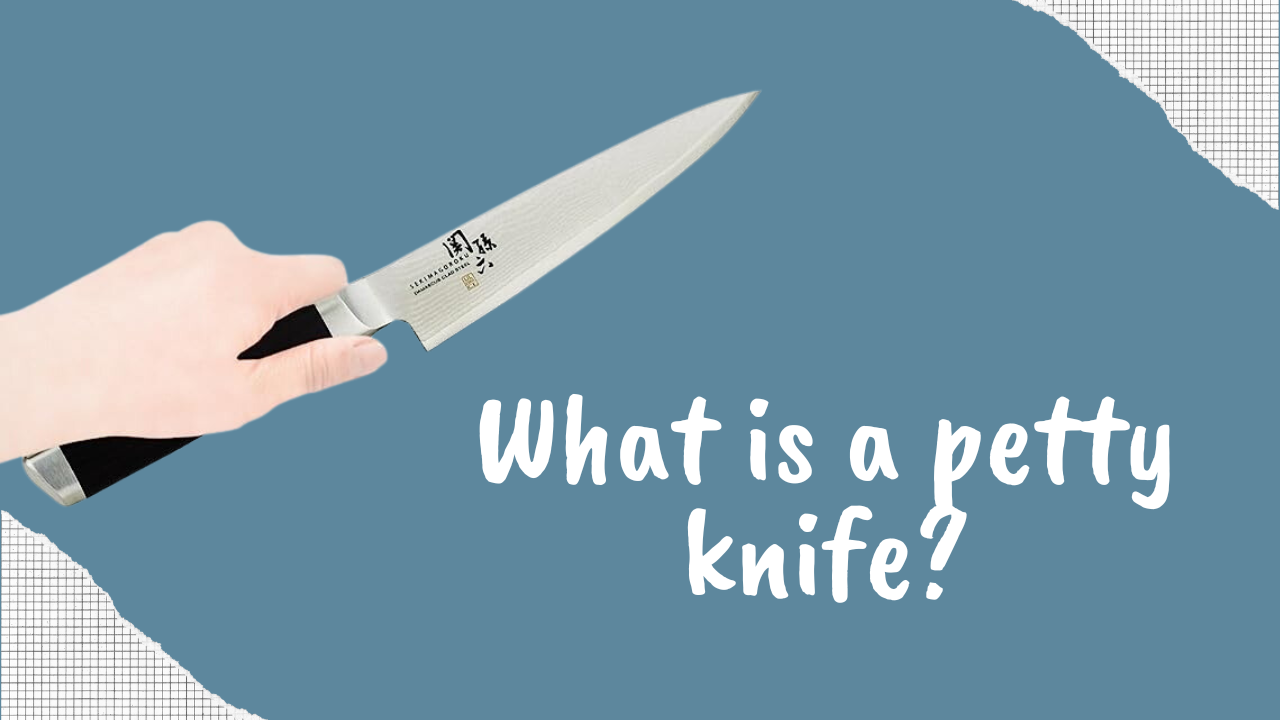Have you ever heard of a petty knife? If you’re a knife lover, it’s a term you should be familiar with. what is a petty knife? A petty knife, also known as a utility knife, it’s a type of kitchen knife that has become increasingly popular in recent years.
We will delve into the specifics of what makes a petty knife unique and why it may be a valuable addition to your collection. Whether you’re a professional chef or simply a home cook, understanding the ins and outs of a petty knife can help improve your culinary skills. So let’s get started on exploring this fascinating tool in depth.
Introduction to petty knives and their uses
Petty knives are a type of Japanese kitchen knife that is commonly used for precision cutting and detail work. They are typically smaller than a chef’s knife. Petty knives can handle a variety of tasks, including peeling, trimming, slicing, and carving. Due to their size and shape, petty knives can provide greater control and accuracy than larger knives when working with smaller ingredients. When selecting a petty knife, it is important to choose one that feels comfortable in your hand and has a sharp edge that can be easily maintained with regular honing or sharpening.

Benefits of using a petty knife in the kitchen
Some of the benefits of using a petty knife in the kitchen include:
1. Precise cuts: The small size of the blade allows for more control and precision when making cuts, especially when working with smaller ingredients like herbs or shallots.
2. Versatility: Petty knives come in various blade lengths and shapes, making them suitable for a wide range of tasks in the kitchen.
3. Comfortable grip: The handle of a petty knife is typically designed to fit comfortably in the hand, allowing for greater control and less fatigue during use.
4. Cost-effective: Petty knives are often less expensive than larger knives, making them a cost-effective addition to any kitchen.
5. Durability: High-quality petty knives are made from durable materials that can withstand frequent use and maintain their sharpness over time.
In summary, a petty knife can be an essential tool in any kitchen due to its precision, versatility, comfort, Cost-effective, and durability.
Versatility for a variety of cutting tasks
Versatility is a key consideration when it comes to selecting cutting tools for a variety of tasks. Some cutting tools that offer versatility across multiple tasks include:
1. Chef’s knives: These knives are designed to handle a wide range of cutting tasks, from chopping vegetables to slicing meat and fish.
2. Utility knives: These knives are smaller than chef’s knives and can be used for more precise cutting tasks, such as trimming meat or slicing cheese.
3. Multi-purpose scissors: Scissors are useful for a variety of cutting tasks, including opening packages, trimming paper or fabric, and snipping herbs or other food items.
4. Rotary cutters: These tools are commonly used in sewing and quilting projects but can also be useful for cutting paper, cardboard, or other materials.
Investing in high-quality tools that offer versatility and durability can save time and effort in the long run.
Tips for choosing the right petty knife for your needs
Choosing the right petty knife can be a daunting task, given the wide range of options available on the market. Petty knives are typically used for precision tasks such as peeling, trimming, and slicing small fruits and vegetables. When selecting a petty knife, it is important to consider several factors:
1. Blade material: Petty knives are typically made from high-carbon stainless steel or Damascus steel. High-carbon stainless steel is durable and easy to sharpen, while Damascus steel offers superior strength and resistance to rust.
2. Blade length: Petty knives typically range in blade length from 3 to 6 inches. The length you choose will depend on your specific needs and the size of the fruits and vegetables you will be working with.
3. Handle material: The handle of your petty knife should provide a comfortable grip that allows for precise control. Common materials include wood, plastic, and composite materials.
4. Blade shape: Petty knives come in different blade shapes, including straight blades and curved blades. The shape you choose will depend on your personal preference and the types of fruits and vegetables you will be working with.
By considering these factors when selecting a petty knife, you can ensure that you choose a knife that meets your needs and helps you achieve optimal results in your kitchen tasks.
Consider the blade material and size
When choosing a blade for a specific task, it is important to consider both the material and size of the blade. The material of the blade can affect its durability, sharpness, and resistance to corrosion. The size of the blade should also be considered based on the task at hand. A larger blade may be more effective for chopping or slicing larger items, while a smaller blade may be better suited for precision cutting or intricate work. It is important to choose a blade size that will provide the desired level of control and efficiency based on the specific task being performed.
Look for a comfortable and ergonomic handle
When selecting a handle, it is important to consider both comfort and ergonomic design. A comfortable handle will reduce the strain on your hand and wrist during use, while an ergonomic design will allow for a more natural grip that reduces fatigue over time. Look for handles with soft grips or padding that provide cushioning and support for your hand. By selecting a handle, you can ensure that you are able to use your tool or implement it safely and effectively for extended periods of time.
Decide on a Western or Japanese-style petty knife
When deciding between a Western-style and Japanese-style petty knife, there are a few key factors to consider
A Western-style petty knife typically has a thicker blade with a curved edge and a pointed tip. This design is ideal for tasks that require more force, such as cutting through meat or tougher vegetables. The thicker blade also makes it easier to sharpen and maintain the edge over time.
On the other hand, a Japanese-style petty knife typically has a thinner blade with a straighter edge and a flat tip. This design is ideal for tasks that require precision and delicate cuts, such as slicing fish or herbs. The thinner blade allows for more control and accuracy when making these types of cuts.
Ultimately, the decision between a Western or Japanese-style petty knife will depend on your personal preferences and the types of tasks you will be using it for. It may be helpful to try out both styles before making your final decision.
Care and maintenance for your petty knife to ensure longevity
To ensure the longevity of your petty knife, it is important to take proper care and maintenance measures. Here are some tips:
1. Hand wash and dry your petty knife after each use using mild soap and warm water. Avoid putting it in the dishwasher or leaving it soaking in water.
2. Use honing steel regularly to maintain the edge of the blade. Sharpen the blade as needed with a sharpening stone.
3. Store your petty knife in a protective sheath or knife block to prevent damage to the blade and injury to yourself.
4. Avoid using your petty knife on hard surfaces like glass or ceramics, as this can damage the blade.
5. Do not use your petty knife for tasks other than cutting food, like opening packages or cutting paper, as this can dull the blade quickly.
By following these care and maintenance tips, you can ensure that your petty knife remains sharp, safe, and useful for many years to come.
Conclusion
A petty knife is a versatile tool for precision and delicate cutting tasks. Choosing between a Western or Japanese-style knife depends on personal preferences and intended use. Proper care and maintenance, such as hand washing, honing, and proper storage, can ensure the longevity and usefulness of the blade. With proper care, your knife can be a reliable and valuable addition to your kitchen toolkit tasks to prevent dulling the blade quickly.
Our Pinterest- Follow Us
FAQ
What makes the petty knife apart from other types of knives is its versatility. While it may not be as specialized as other types of knives, such as a bread knife or fillet knife, it can be used for a wide range of tasks in the kitchen. Additionally, many petty knives have a slightly curved blade that allows for rocking back and forth when cutting, making them useful for mincing herbs or garlic.
Overall, the petty knife is an essential tool in any kitchen due to its versatility, precision, and ease of use.

Hi! I am Deb Lewis. I am a knife lover and for that, I have launched knifetor. Knifetor is the best place to find reviews on kitchen knives Learn about brands, styles, materials, and more to help you choose the knife.
